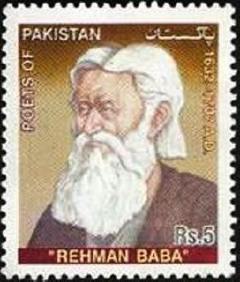Khyber Pakhtun Khwa (KPK)
Introduction
KPK
is the abbreviation of Khyber Pakhtun Khwa. It was previously known as NWFP
(North West Frontier Province). This name was given by the British ruler during
their rule. It is situated on the North West side of the Pakistan along the
Afghanistan border. In 2010, under the18th amendment in Pakistani constitution
its name was changed to KPK. The total area of KPK is 74,521 km2. The official language of the province is
Pashto. Others language include Chitrali, Kohistani, Urdu and Hindko. The capital of KPK is Peshawar. The Khyber Pakhtun Khwa means “The
Pathan/Pashtun Culture and Civilization”.
Climate
Khyber
Pakhtunkhwa's environment fluctuates enormously for the region of its size,
covering most of Pakistan's environment types. The territory extends southwards
from Hindu Kush's Baroghil Pass, covering around six levels of the scope; it is
principally a sloping landscape.
Dera
Ismail Khan is perhaps the hottest district in South Asia, while the
temperature in the mountain reaches toward the north is gentle in the summers
and incredibly cold in the colder time of year. Since the air is frequently
very dry, the everyday and yearly temperature ranges are very huge.
 |
| Dera Ismail Khan |
· Central KPK
Since muggy breezes starting from the Arabian Sea can invade the area, precipitation is generously heavier on the southern sides of Nanga Parbat and in the Lower and Upper Dir Districts than additional north. Winter despondencies produce critical precipitation when they conflict with mountain inclines.
 |
| Nanga Parbat |
 |
| Nanga Parbat |
The
storm, notwithstanding its brief term, is frequently powerful. As a result, the
southern slants of KPK are Pakistan's wettest locale. Yearly precipitation has
a scope of 500 mm (20 inches) in the most secured spots to 1,750 mm (69 inches)
in spaces of Abbottabad and Mansehra Districts.
·
Southern KPK
The
temperature in southern KPK is surprisingly high: Dera Ismail Khan, the
region's southernmost locale, is perceived as being perhaps the most smoking
region on the planet, with a normal temperature of 50 °C (122 °F). During the
cooler months, evening time can be cold and ices are normal; snow is
exceptional, while daytime temperatures remain sensibly warm with a lot of
daylight.
 |
| Dera Ismail Khan |
Culture
of KPK
Pashtun
culture depends on Pashtunwali and Islam that is an old lifestyle. Its set of
experiences and roots have been antagonistic, however there couldn't be any
agreement shaped. There were various hypotheses about the starting points of
Pashtuns, expecting that they have Jewish, Arab, Aryan, or mixed origin. None
was adequately enticing to draw a choice. Pathans are profoundly inquisitive
and anxious to be aware of their race's starting point; however it may not be a
major worry for specific races. Certain individuals expect that they may
likewise be connected to Khalid Bin Waleed and as a result of that that Pathans
might have an Arabic foundation.
All
the while, one hypothesis joins them to Adolf Hitler's, which has an
association with the Afghans to the Aryans.
Vacations, Special Occasion and
Rituals
Pashtuns
observe Wada Koidana, Gham khadi, Topak tamacha, kat bistara, hujra, and
furthermore the appearance of Spring Sparlay, otherwise called 'Nava Wroz' (New
Day). It is an old yearly Pashtun occasion that commends the start of spring
and the New Year.
 |
| Hujrah |
Poetry and Tappa
Pathan is very notable for verse; they are
enthusiastic and energetic, as proven by their lovely abilities. Their
well-known artists incorporate Khushkal Khattak, Rahman Baba, and Amir Kror
Suri.
The most renowned and most established type of Pakhtun verse is Tappa. The first refrain is more limited while the following line is longer, yet it addresses generally human feelings. It is additionally famous among the Pashtuns that a student would sing tappa, the old in their hujrahs.
It's
the main melody that is sung at the hour of grieving and marriage. In song,
customary Pashto instruments 'mangai' and 'rubab,' are accustomed to sing it.
It has up to sixteen distinctive amicability models and is sung with a full
orchestra.
Tourist point of KPK
KPK
is known for the traveler point for experiences and voyagers. The territory has
shifted scenes, going from tough mountains, valleys, slopes and thick rural
ranches. The district is likewise popular for the ancestral root. There are
number of Buddhisht archeological destinations from Gandhara region like
Takhtbhai Pushakalvati. There are different many historical monuments which
attract people from all over world.
There
are many tourist points in KPK which will be discussed in my next article.















